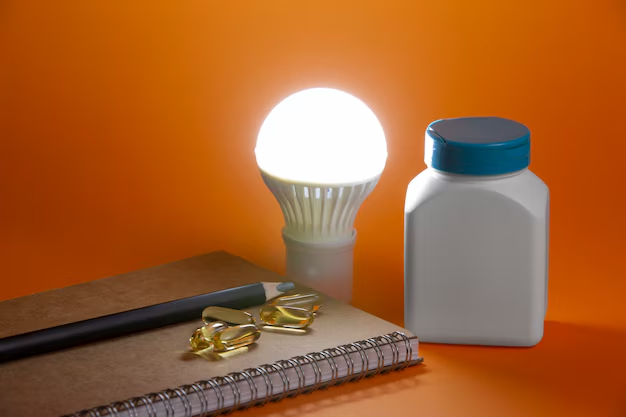When it comes to lighting your home, the E26 bulb often comes up as a popular choice. Its versatility and widespread use make it a staple in many households. But what exactly is an E26 bulb? How does it differ from other types of bulbs? And why should you care about it? This article will shed light on all things E26, from its definition to its applications and benefits.
What is an E26 Bulb?
Definition and Specifications
The term “E26” refers to a type of light bulb socket and bulb base. Here’s a breakdown of what this term means:
- E stands for “Edison,” which is named after Thomas Edison, who is credited with inventing the screw base for light bulbs.
- 26 denotes the diameter of the base in millimeters, which is 26 mm for E26 bulbs.
So, an E26 bulb has a screw base that is 26 mm in diameter, making it one of the most common bulb bases used in the United States.
How E26 Bulbs Compare to Other Types
E12 vs. E26
While the E26 is quite common, another popular base type is the E12. Here’s how they differ:
- E12: Known as the “candelabra” base, it is smaller, with a diameter of 12 mm. It’s often used in decorative lighting, like chandeliers.
- E26: Larger and more robust, it’s widely used for general-purpose lighting, such as in ceiling fixtures and lamps.
E27 vs. E26
E26 and E27 are often confused, but they have subtle differences:
- E27: This is the European equivalent of the E26. The E27 base is slightly larger (27 mm in diameter) but is largely compatible with E26 sockets due to their similar design.
Types of E26 Bulbs
1. Incandescent Bulbs
These are the traditional light bulbs that most people are familiar with. They produce a warm, yellow light and have been largely replaced by more energy-efficient options but are still available.
2. CFL (Compact Fluorescent Lamps) Bulbs
CFLs are more energy-efficient than incandescent bulbs and have a longer lifespan. They work by passing electricity through a gas, which then emits UV light that causes a fluorescent coating inside the bulb to glow.
3. LED Bulbs
LED bulbs are the most energy-efficient option. They use light-emitting diodes to produce light and have a much longer lifespan compared to incandescent and CFL bulbs. They come in various colors and brightness levels, making them versatile for different settings.
Applications of E26 Bulbs
1. Home Lighting
E26 bulbs are commonly used in various home lighting fixtures:
- Lamps: Desk lamps, table lamps, and floor lamps often use E26 bulbs.
- Ceiling Fixtures: Many ceiling lights, including flush mounts and chandeliers, use E26 bases.
- Recessed Lighting: E26 bulbs are also used in recessed lighting fixtures.
2. Commercial Use
In commercial settings, E26 bulbs are used for:
- Retail Lighting: Store displays and general lighting often use E26 bulbs for their brightness and color options.
- Office Lighting: Many office spaces use E26 bulbs in overhead fixtures and desk lamps.
Advantages of E26 Bulbs
1. Versatility
The E26 bulb’s wide availability and compatibility with many fixtures make it a versatile choice for various lighting needs.
2. Easy Replacement
Since E26 bulbs are so common, finding replacements is generally straightforward and affordable.
3. Wide Range of Options
Whether you prefer incandescent, CFL, or LED, E26 bulbs come in many types, allowing you to choose the best option for your lighting needs.
Installation Tips
1. Check Compatibility
Before purchasing an E26 bulb, ensure that it is compatible with your fixture. Check the wattage and voltage requirements.
2. Turn Off Power
Always turn off the power to the fixture before changing the bulb to avoid electrical shock.
3. Handle with Care
E26 bulbs, especially LED and CFL types, can be fragile. Handle them carefully to avoid breakage.
Maintenance and Care
1. Regular Cleaning
Keep bulbs clean to ensure maximum light output. Dust can diminish the brightness of your bulbs.
2. Replace When Necessary
If a bulb starts flickering or dims significantly, it’s time to replace it. Regularly inspect your bulbs to maintain proper lighting conditions.
3. Dispose Properly
Dispose of bulbs according to local regulations. CFLs contain mercury and need to be disposed of properly to prevent environmental contamination.
Conclusion
E26 bulbs are a staple in both residential and commercial lighting. Understanding their types, applications, and advantages can help you make informed decisions about your lighting needs. Whether you’re upgrading your home lighting or outfitting a commercial space, E26 bulbs offer a range of options to fit your needs.
FAQs
1. What is the difference between E26 and E27 bulbs?
The main difference is their diameter, with E26 being 26 mm and E27 being 27 mm. E26 is commonly used in the US, while E27 is the European standard.
2. Can I use an E26 bulb in an E27 socket?
Yes, in most cases, E26 bulbs are compatible with E27 sockets due to their similar design.
3. Are E26 LED bulbs energy-efficient?
Yes, E26 LED bulbs are highly energy-efficient compared to incandescent and CFL bulbs, offering significant savings on energy bills.
4. How do I know if my fixture is compatible with an E26 bulb?
Check the fixture’s specifications or consult the manufacturer to ensure compatibility with E26 bulbs.
5. What should I do if my E26 bulb is flickering?
Flickering can be caused by a loose connection or a failing bulb. Try tightening the bulb or replacing it if necessary.












